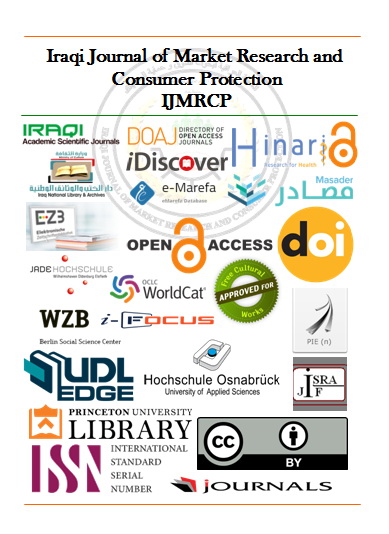THE USE OF ULTRAVIOLET RAYS TO PRESERVE FERMENTED GREEN OLIVES AND ITS EFFECTS ON CHEMICAL PROPERTIES OF ITS EXTRACTED OIL
THE USE OF ULTRAVIOLET RAYS TO PRESERVE FERMENTED GREEN OLIVES AND ITS EFFECTS ON CHEMICAL PROPERTIES OF ITS EXTRACTED OIL
Keywords:
Keywords: Olive oil, ultraviolet, free fatty acids, peroxide value, thiobarbituric acid.Abstract
The use of ultraviolet rays is one of the methods of treating surface contamination of many foods especially pickles. however, there are some side effects to its use, especially in high percentage oil food products, it is necessary to determine the appropriate doses and time periods to avoid deterioration of its oil physicochemical characteristics. this study was conducted to see the effect of ultraviolet rays 15W on some chemical properties of olive oil when using it to preserve green olive pickles, treated for 5, 10 and 15 min daily. green olive fruits Iraqi variety (al-ashrasi), in season (2020-2021) were pickled using Spanish style, the best time period to preventing characteristics changes on oil extracted form treated pickles was tested. the results of this study showed the chemical tests for the oil extracted from pickled olives during the fermentation stages. the results recorded after 30 day pickling condition for acid number (FFA) for control (untreated with UV) was 1.62%, while the other treatments which treated with ultraviolet rays for 5, 10 and 15 min daily recorded 0.41, 0.44 and 0.46% respectively. peroxide value of control treatment, recorded a significant increase (p≤0.05)), it amounted to 2.59 meq O2/kg oil, while treated samples were recorded 0,53, 0.56 and 0.56 respectively, thus because high contaminants in control may get hydrolysis enzymes of doses of ultraviolet rays in 15W for a period of 5 min daily was the best treatment. a high percentage of thiobarbituric acid (TBA) in the control treatment compared to the rest of the other treatments.






